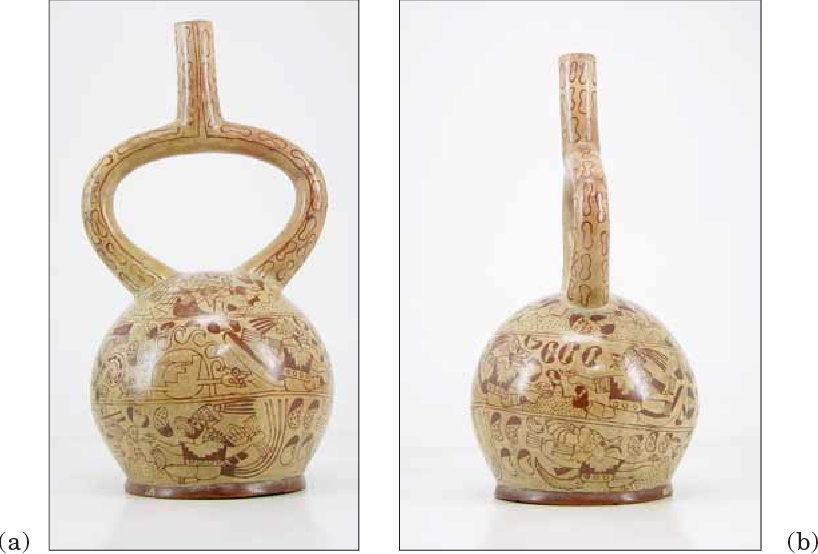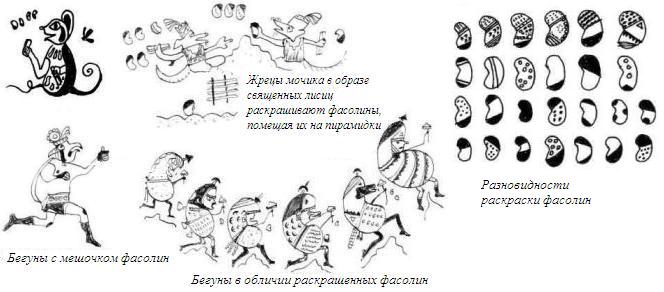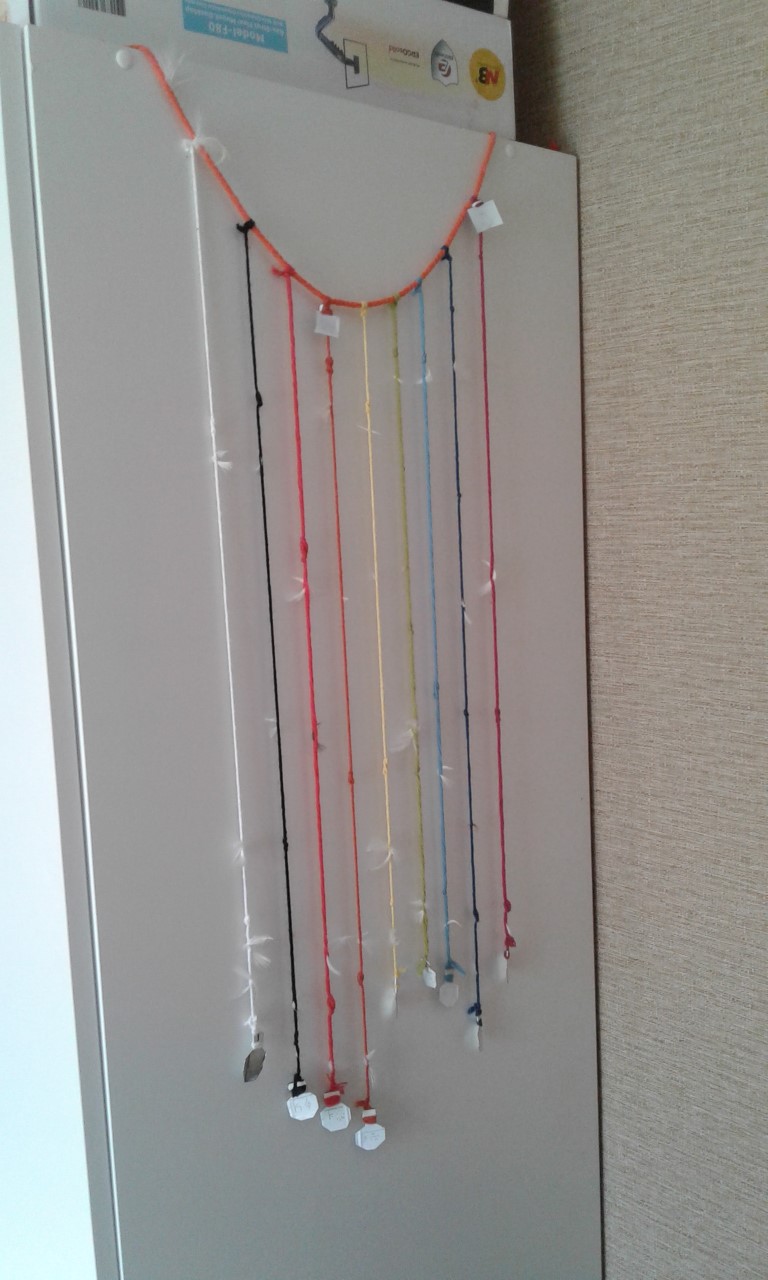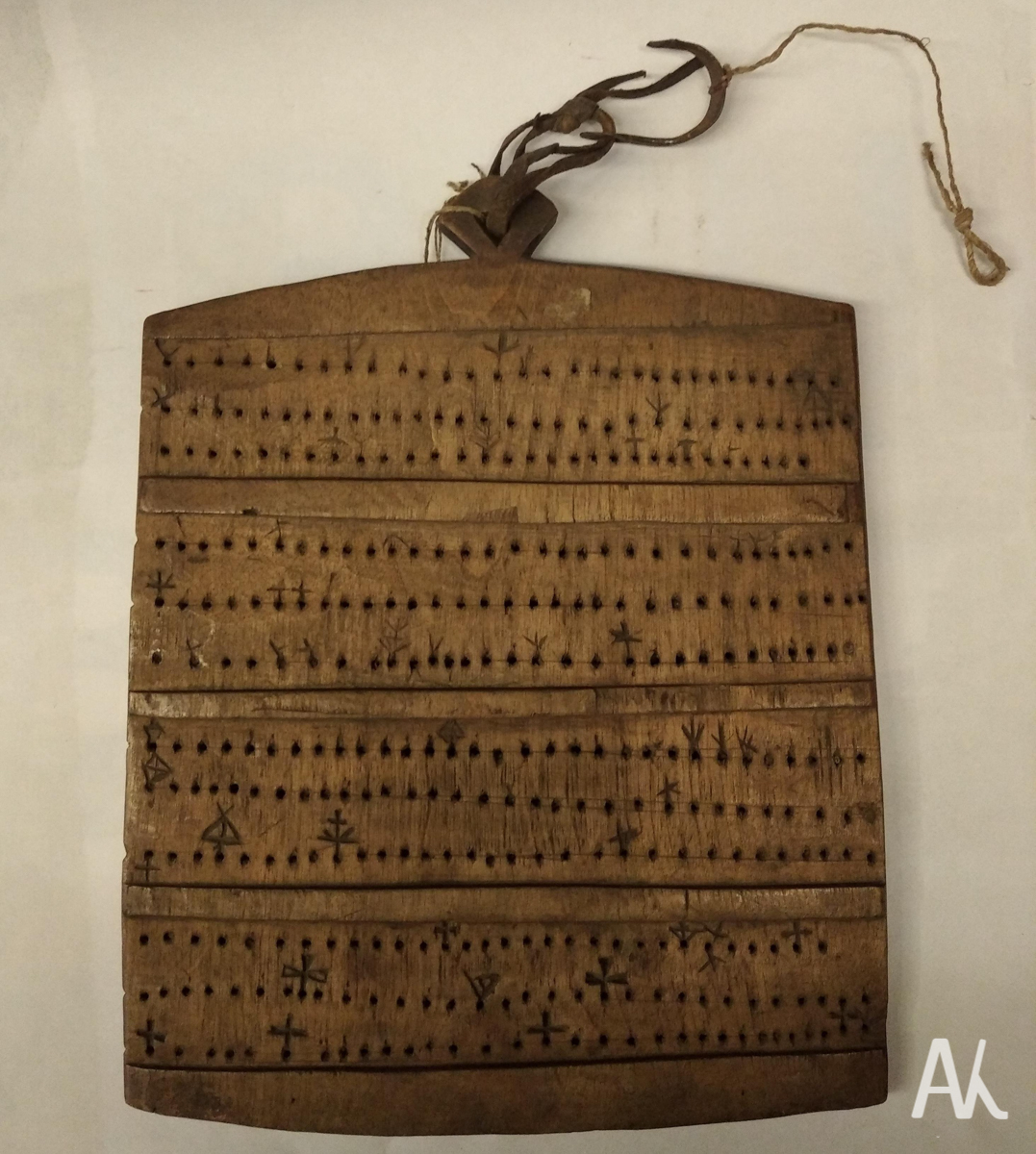El juego de mesa de la cultura Mochiko junto Inca.
Todos los invitados a los Juegos Chasqui Sapa Inca recibirán una entrada gratuita, bebidas y refrigerios. También recibirán un recuerdo y habrá un sorteo de premios.
El próximo evento tendrá lugar aquí (gratuita):
Play Planet , P.º de los Tilos, 64, Cruz de Humilladero, Malaga
Bienvenido 13 jan · 5:30 PM to 10:00 PM CET
Bienvenido 27 jan · 5:30 PM to 10:00 PM CET

Modelo de la mesa de juego – Yupana.
https://www.thingiverse.com/thing:5813598
Es público, creado por un videobloguero y se puede usar libremente con jugadores principiantes.
En esencia, es un subtipo de ábaco o calculadora analógica. Los niños incas dedicaban unos cuatro años a aprender todas las complejidades de su uso. Sin embargo, las habilidades básicas se pueden adquirir en aproximadamente una hora de juego.
https://youtu.be/JSQ9nGqyDGQ?t=1025
El Secreto de los incas – filmada en Cuzco y Machu Picchu – 1952
En el fragmento seleccionado de la película, el personaje principal agrega la parte faltante a la yupana. Y sólo entonces uno está un paso más cerca del secreto de la civilización Inca..
Reclutamiento para estudiantes de primer año.
Para niños a partir de 3 años.
El juego incluye 5 plantillas, una en cada lado.
Ademas de sobre cómo hacer pirámides.
Teoría para adultos en un libro de aritmética con tablas de multiplicar piramidales, que se puede comprar por separado en ruso con errores corregidos.
El juego Inca es apto para niños de 3 a 5 años en grupo con un niño mayor de 8 años, quien dibujará sobre las piedras y dispondrá las piedras en fila sobre la yupana.
El juego lo pueden jugar de 2 a 9 personas (o incluso más) de diferentes edades, incluidos padres y abuelos.
Tenemos los siguientes roles en el juego:
1 – Ai-Apek, 2,3 – Águilas marinas, 4,5 – Zorros, 6 – Puma, 7 – Jaguar, 8, 9 – Ciervos
Breve Antecedentes Históricos sobre la Mitología de la Cultura Moche.
Las características específicas de las bellas artes de los indígenas de la costa norte del Perú en la primera mitad del primer milenio (claridad y realismo, amplitud de temas) nos brindan una rara oportunidad de estudiar la mitología… de la cultura Moche.La formación de la cultura Moche se dio sobre la base de las anteriores (Kupisnike, Salinar) a principios de nuestra era en los valles Moche y Chicama.El estado de Chimor (siglos XIII-XV) se convirtió en cierta medida en el sucesor de la civilización moche.
La base de la existencia de los Moche fue una agricultura de irrigación altamente desarrollada (aunque la atribución de ciertos canales y acueductos a esta cultura no siempre está estrictamente probada). La pesca y la industria marítima desempeñaron un papel importante. A juzgar por los productos de cerámica, metalistería, etc., la artesanía estaba muy desarrollada. La ausencia de torno de alfarero se compensaba con la fabricación de vasijas en moldes. Una conocida pintura que representa un taller textil.
[1], en el que trabajaban un total de 14 personas (muy probablemente algún tipo de producción socialmente organizada, posiblemente similar a los “monasterios” donde las doncellas sagradas del sol entre los incas se dedicaban a tejer).
Entre los monumentos del arte Mochica el lugar más importante corresponde a las imágenes en cerámica. Los vasos suelen ser de color marrón rojizo y, con mucha menor frecuencia, negros. En muchos casos, su decoración combina diversas técnicas pictóricas (pintura y escultura, pintura y relieve, relieve y escultura). La pintura suele ser bicolor: el diseño se aplica con pintura marrón oscuro sobre un fondo crema claro. A veces se añadía un tercer color: el naranja. En cuanto a su ejecución, los frescos, cuyos restos se conservan en los muros de los complejos monumentales de Huaca de la Luna y Pañamarca, son similares a las imágenes en cerámica. Se diferencian de las pinturas sobre vasijas únicamente en su policromía. Hay imágenes de tramas en metal, madera y otros materiales.
El primero (desde la década de 1930) en emprender su estudio sistemático fue el investigador peruano R. Larco Hoyle. Llegó a la conclusión
[2], que la mayoría de las imágenes están asociadas a un personaje antropomorfo con colmillos sobresaliendo de su boca y una o dos serpientes colgando de su cinturón, al que dio el nombre de “Ai-Apek”.
Los aleutianos y los esquimales tienen una de las lenguas más complejas del mundo. Para intimidar al enemigo, se insertaban colmillos en el labio superior. Lo hicieron para intimidar a los Chukchi, otra tribu de cazadores de ballenas que vivían en la costa de Siberia, en la región de Chukotka. Ambas tribus se movían silenciosamente por la orilla en sus kayaks. Y en pocos años, con una afortunada combinación de circunstancias, los aleutianos o esquimales podrían haber llegado a Sudamérica.
Consideremos a Ai-Apek como un hombre con un traje de piel de pez y un sombrero decorado con un guepardo. Para este rol será designado el participante con más experiencia que haya completado con éxito el juego al menos 4 veces en todos los roles principales.
Ai-Apek, según R. Larco Oile, lucha con “demonios”, y todos los demás personajes (zoomorfos) conforman su séquito y comitiva. Las conclusiones del científico peruano se basaban en el conocimiento de una enorme cantidad de material fáctico, pero a menudo se obtenían sin un análisis cuidadoso, atrayendo más por la audacia de la fantasía que por la persuasión científica.
Por ejemplo, T. A. Joyce, al observar escenas de carreras ceremoniales
[3], en el que participan criaturas zoomorfas, asumió que estamos hablando de personas vestidas con los trajes de sus antepasados.
A la cabeza del panteón moche se encontraba, como se indica, el dios de la Luna, quien, sin embargo, rara vez tomaba parte activa en los acontecimientos. La figura más popular era el dios con serpientes en su cinturón (conservamos el nombre “Ai-Apek”), un héroe cultural y el personaje central de los mitos. A veces le acompañaba su hijo o su ayudante.
El zorro, junto con el águila marina, es una deidad guerrera. Los follos son estudiantes que se han graduado o han completado 4 años de estudios. Realizan prácticas docentes. Generalmente se les representa caminando con armas en sus manos. Los padres son los encargados de desempeñar esta función. Su objetivo es ayudar al ciervo, al jaguar y al puma. Y engañar de todas las formas posibles a las Águilas Marinas (estudiantes de 3er año), con quienes el propio Ai-Apek estará luchando. Si los zorros fallan y ganan las Águilas Marinas, los zorros tendrán que llevar una vuelta de honor por cada Águila Marina, una de las ganadoras, rodeada de su séquito en una camilla (cualquier silla servirá como camilla).
Águila Marina (alumnos de 3er año o niños mayores). E. Yakovlev demostró que al representar un ave rapaz, los moche siempre tenían en mente al águila marina.
[32]. El águila participa en diversas ceremonias y juega un papel importante en el mito de la rebelión de las cosas. Está pescando con un segundo personaje antropomorfo con serpientes en la cintura
[33] y pelea con Ai-Apek
[34] y con Lisa
[35]. A menudo se representa en una forma casi puramente zoomorfa.
Puma, Jaguar. Deidades: guerreros, aparentemente parte del círculo íntimo del dios de la Luna. Estos son estudiantes de segundo año. Ya pueden manipular hilos y figuras tridimensionales con facilidad. Pero apenas están dominando y observando la geometría multidimensional.
Ciervo. A menudo se le representa sin colmillos en la boca. Participa en ceremonias, pero no pertenece al séquito de Dios con los Rayos. No tienen cinturones con placas. Estos son estudiantes en su primer año de estudios. Generalmente los niños más pequeños. Las Águilas Marinas los cuidan siempre.
El mito de la rebelión de las cosas.

En la leyenda registrada por Calancha, Vichama y el Sol destruyen a los primeros humanos creados por Pachacamac por sus fechorías, pero luego se arrepienten de ello. El motivo de la destrucción de los primeros pueblos por los dioses está muy extendido en el folclore de diversos pueblos. Generalmente se trata de una catástrofe de agua o fuego, y con el desarrollo de las relaciones de clase, la causa de la misma suele ser el comportamiento inmoral de las personas. Lo habitual es que una de las personas y su familia sobrevivan, y de ellos desciende la humanidad moderna. Entre los indígenas quichés de Guatemala
[69] y el Huarochirí en las estribaciones andinas de la región Lima
[70] Este mito tomó la forma específica de una rebelión de los animales domésticos y de los objetos vivos y de sus golpes a sus dueños. Una versión similar del mito también era común entre los mochica, aunque en lugar de objetos domésticos se utilizan en la acción ropa y armas militares. La mayoría de las veces se representa un garrote, aparentemente, el líder de las cosas rebeldes.
Las deidades zoomorfas del entorno del Dios de los Rayos se ocupan de la mujer situada junto a la pirámide y de los objetos animados. Frente al dios de la Luna (en el centro de la composición), con las manos juntas en oración, se sienta un hombre vestido con ricas ropas. Aparentemente, la supresión de la rebelión de las cosas ocurre en respuesta a sus oraciones, y por lo tanto la deidad suprema cambió su ira en misericordia y la gente no fue completamente destruida.
El mito de los frijoles guerreros.
El culto al frijol, ocupó un lugar excepcionalmente importante en el sistema de representaciones míticas de los moche. Esto estuvo determinado no tanto por la importancia del cultivo del frijol en la agricultura (el lugar principal, por supuesto, pertenecía al maíz), sino, aparentemente, por tradiciones que se remontan a tiempos antiguos. Antes de la aparición del maíz en la segunda mitad del II milenio antes de Cristo. mi. La principal planta doméstica de la costa peruana era precisamente el frijol, por lo que quizá este culto esté conectado con alguna capa más antigua de la mitología moche que la deificación del maíz. Los Moche utilizaban los frijoles para algún tipo de juego (posiblemente apuestas) o para adivinar el futuro.

Hay alrededor de 30 variaciones de coloración de las judías, pero en cada cuadro individual siempre hay sólo unas pocas y nunca encontramos nada que se parezca a una inscripción. Los frijoles desempeñaron un papel importante en la ceremonia de la carrera sagrada. Se representan frijoles antropomorfizados con tocados de guerreros que caminan sosteniendo armas en sus manos.
[77]. En una de las pinturas, Bob está luchando contra un ciervo.
[78], Sin embargo, hay muy pocas escenas de este tipo. Al parecer, las habas no tienen relación con los mitos relativos a las deidades centrales y se debe asumir la existencia de una leyenda especial que hable sobre ellas.
Además del ciclo de mitos épicos, las creencias de los moche ciertamente incluían ideas sobre varios espíritus locales, sobre patrones sobrenaturales de objetos del mundo circundante, así como elementos de magia destinados principalmente a aumentar la fertilidad de los animales, las plantas y las personas. Por ejemplo, las plantas comestibles, como era el caso de los incas, eran animadas, y sólo el maíz y la batata se asociaban con las deidades supremas.
[79] (como se indicó, los frijoles ocupaban una posición especial). Los espíritus de las plantas eran vistos como personajes masculinos, mientras que entre los incas eran femeninos. Es cierto que la famosa imagen de la patata suele ser comentada como “Madre Patata”.
[80]. El único factor identificativo aquí es el tipo de tocado, que puede considerarse más sacerdotal que femenino. Si no es así, hay que tener en cuenta que la papa era un cultivo de montaña que alcanzó cierta difusión en la costa recién a partir de la época de los Moche
[81] y las creencias asociadas con él pueden haber sido tomadas junto con el producto mismo. Además, los espíritus de las plantas eran representados como frutas con cabeza de pájaro.
[82].
Los chasqui son los mensajeros de los incas.
Corrieron 5 kilómetros cuesta arriba a máxima velocidad. Por lo tanto, un mensaje o un pequeño paquete podía viajar de un extremo al otro del Imperio Inca en 5 días.
E. Zeler
[96], y luego R . Larco Oile
[97] Se ha sugerido que la cerámica Moche representaba corredores-mensajeros similares a los chasquis incas.
[98]. La opinión de R. Larke Oyle estaba relacionada con su hipótesis sobre la escritura en los frijoles. Si los signos en las habas podían transmitir información, entonces la bolsa de habas tenía que corresponder a todo el mensaje.
La principal ruta estratégica servida por los chasquis conducía desde
Quito a
Cusco y hasta
Chile. A lo largo de este camino se instalaron postes donde se situaban los corredores que recogían el testigo. La ruta a lo largo del principal camino Inca, de Quito a Cusco o viceversa, era de 2 a 2,5 mil kilómetros a través de un terreno rocoso con una pendiente pronunciada. Así, la velocidad de carrera era de unos 500 kilómetros por día (la distancia total se cubría en cinco días).
Conclusión
Si en los personajes del panteón Moche aún son claramente visibles los rasgos de héroes culturales y ancestros casi totémicos, Si (en Chimor), Pachacamac (en la Costa Central), Huiracocha (entre los Incas) son verdaderos dioses, y en su culto es claramente visible una tendencia hacia el monoteísmo, que obviamente está en gran medida relacionada con la formación de grandes estados despóticos en el Perú (Chimor, Tawantinsuyu). La mitología mochica, sin embargo, aparentemente corresponde a una etapa anterior de la evolución social.
LA MYTHOLOGIE DESMOCHICAS (LE PÉROU)
Résumé
Les beaux arts de la culture des Mochicas (le littoral boréal du Pérou, la premiere moitié du Ier millénaire de notre ere) rarissimes par leur réalisme et la multiplicity des themes offrent une possibilité exceptionnelle d’étudier la mythologie d’une société ayant á peine franchi le seuil de la civilisation et ne possédant pas encore d’écriture. Les données iconographiques nous montrent que c’était le Dieu de la Lune qui était une divinité supréme chez les Mochicas. Cependant il ne jouait pas un role important. La place principale appartenait á deux personnages anthropomorphes qui étaient, paraít — ils, freres et rivaux. Dans la littérature, á l’un d’eux on a attribué le nom d’A’i — Apek, l’autre n’était pas jusqu’á présent nommé par les chercheurs. Ces étres sont entourés par des personnages zoomorphes dont chacun était individualisé á un degré différent. Il paraít possible de reconstituer, en traits généraux, l’épopée mythologique des Mochicas, ou les aventures des deux freres divins sur la mer et leur lutte contre les demons marins composaient un épisode central. L’absence d’une déesse protectrice de l’agriculture et le Panthéon archa’íque zoomorphe sont les particularités de la mythologie des Mochicas. Sa structure révele des affinités á celle d’autres tribus des chasseurs et des premiers laboureurs d’Amérique (deux héros chargés d’une mission civilisatrice et les animaux les entourant) mais les fonctions et les roles des personnages sont en conformité aux conditions de l’époque initiale de l’existence d’une société divisée en classes.
De toutes les cérémonies sacrées répandues chez les Mochicas le role principal fut attribué á «la course rituelle» qui était étroitement analogue, selon l’auteur, á la féte d’uarasiko’i chez les Incas (l’admission des jeunes nobles dans la caste supérieure).
Fuente: “Arqueología Soviética”, nº 4, 1972. Editorial “Ciencia”, Instituto de Arqueología de la Academia de Ciencias de Rusia, Moscú.
Instrucciones de juego.

Este lugar se llama – huaca (La foto muestra el más famoso. Básicamente es una plataforma para colocar la yupana, para calcular los días en el calendario. Pero a los niños les enseñaron esto a través del juego.)
Había hasta 40 lugares de este tipo alrededor del perímetro del Cusco. De estos, 4 son los principales. Hanum hasta 270. Todos ellos están relacionados con las luminarias, las direcciones a partes de todo el país y el calendario de obras anuales (incluida la temporada de construcción y la temporada de operaciones militares).
https://es.wikipedia.org/wiki/Huaca
Antecedentes históricos: [ En una escuela de cuatro años, los estudiantes estaban alojados en calles separadas. Los más jóvenes arriba, los mayores abajo. La segunda y cuarta terrazas (de color púrpura) simbolizan la ubicación del primer y segundo año de estudio, respectivamente. Además, en el segundo año de estudios, el estudiante tenía 2 puntos (placas de metal) en su cinturón. Los estudiantes de primer año no tenían cinturón.]
Estoy contento con el diseño, sugerí un pequeño cambio para dejar claro que hay un camino entre las celdas moradas deformadas.
Cómo se sientan los participantes.
Los jugadores del juego en Perú estaban ubicados en los niveles 2-3. En lo más alto y en una zona no muy grande se encontraban 1 ó 2 de los participantes más jóvenes con máscaras de ciervo. Por lo general, veian jugar a otros niños una vez o esan invitados por primera vez.
En el nivel inferior hay de 2 a 4 participantes de la pareja Águilas Marinas (3 partidos o 3 años de entrenamiento) y Puma y Leopardo (2 partidos o 2 años de entrenamiento). Las Águilas Marinas ayudan a los Ciervos con sus tareas porque las Águilas Marinas pueden usar las partes que los Ciervos han preparado para crear sus artefactos de juego. Se trata principalmente de figuras geométricas 3D y proyecciones 3D de figuras regulares multidimensionales en nuestro espacio. El conocimiento de estas cifras ayuda a las Águilas Marinas a derrotar a los Zorros y aprobar el examen con el propio Ai-Apek y recibir la cuarta placa en el cinturón (y convertirse en un Zorro), así como un valioso premio. Si derrotan al Zorro, recibirán una vuelta de honor en una camilla portátil. Es especialmente divertido si tienes que arrastrarlos cuesta arriba.
Ai-Apek observa el juego desde su lugar separado y resuelve todas las disputas, si es necesario, de acuerdo con las reglas del juego.

Los zorros conocen perfectamente el secreto principal de Yupana, que se refiere a la transición en zigzag en el centro de Yupana, que está relacionado con el hecho de que uno puede imaginar en su mente no toda la enorme complejidad de un polígono regular multidimensional, sino manipular ni siquiera sus proyecciones, sino la representación simbólica de los vértices, aristas y caras, que se presentan en los frijoles de colores. Porque cada síplex multidimensional puede representarse mediante un simple polígono plano con el número correspondiente de vértices. Yaque
Simplex es una figura auto-dual.
Este objeto era un símbolo del poder de Sapa Iica (el Jefe Inca y su Hermana). Generalmente se representa como una flor.
Se utilizó para descifrar
Quipu. El principio de funcionamiento es similar al de la máquina de cifrado Enigma. Todas estas sutilezas se estudian en los siguientes niveles del juego con Yupana.
La tarea de los Zorros es enseñar al Leopardo y al Puma para que con el tiempo se conviertan en Águilas Marinas. Y para engañar a las Águilas Marinas para que no pudieran viajar a expensas de los zorros en camilla y ser admitidos al examen en Ai-Apek. Para que las Águilas Marinas no se igualen a los Zorros y reciban todos los privilegios de los Zorros.
Este tutorial no cubrirá habilidades de tejido de hilo ni la creación de formas geométricas complejas en papel. Esto se hará en la próxima serie del juego.
El dispositivo tampoco se puede desmontar Tocapu, lo cual es necesario para crear los shlokas poéticos correctos y codificar el mensaje en la kipá.
En Yupan hay figuras que simbolizan ciervos, pumas, leopardos y águilas marinas, cada una en sus propias calles. Los niños se acostumbran a que Yupana es como una maqueta del Cusco con calles. Ya en esta etapa se realiza la transición del pensamiento objetivo al pensamiento simbólico. En este caso la Yupana es el símbolo del Cusco. Y la cadena de células es un símbolo de la calle.
La esencia del juego

Cada celda es para una figura geométrica específica. En estas calles, marcadas con cifras y palos contadores, todo está más o menos claro. Pero aquellas calles que ascienden hasta la colina inferior requieren pensamiento abstracto y visualización de polígonos multidimensionales ensamblados a partir de tubos e hilos. Este es el tipo de pensamiento que desarrolla este juego.
Figura naranja (en la celda 10) en la calle verde estos son zorros o padres. Es decir, los expertos más cool. Todo lo que está debajo de esta calle (más cerca de la colina más baja de terrazas) es, en realidad, un cálculo matemático interesante.
Lo cual, sin embargo, comprendieron los hijos de los Incas y los estudiantes más especialmente escogidos y capaces de los pueblos distantes.
Luego der egresar de esta escuela-universidad, trabajaron en temas de encriptación de mensajes en el Imperio y la organización de bases de datos sobre quipus en el Imperio Inca de Sapa, gestión de proyectos y control de construcción.
Así como el mapeo y creación de modelos de asentamientos Incas para la organización de Huacas (lugares sagrados que servían como marcadores del movimiento de los cuerpos celestes) y Sifones (sistemas de entrega de agua a asentamientos en las montañas).
La esencia del juego es que cada grupo complete todas las tareas para rellenar las líneas horizontales. Trabajar cooperativamente dentro de su grupo (juniors + seniors).
Si todo se hace correctamente, entonces será posible colocar en las celdas las tarjetas triangulares correspondientes con símbolos digitales o incluso muestras de poliedros y arreglos de cuentas, tubos, hilos y triángulos (para que los Venados, Pumas, Leopardos y Águilas Marinas recuerden cómo utilizar la yupana).
Estas figuras pueden estar hechas de papel o tejidas en posición horizontal a partir de hilos (hay secuelas separadas para esto, la lista se encuentra a continuación: “Minijuegos y secuelas”).
Y luego comienza a llenar las celdas restantes con polígonos regulares, estudiando sus propiedades y coloreando piedras grandes en forma de guerreros: corredores y descubriendo qué guerrero será el primero en llegar a la cima de la colina opuesta, en la esquina inferior derecha. Tienes que correr hasta allí por la carretera serpenteante. Es necesario realizar un cálculo rápido en la cabeza, imaginando el polígono multidimensional necesario, o manipular correctamente las piedras de colores y dibujar correctamente la insignia en el Bob-Runner.
Esto requiere el trabajo en equipo coordinado de un equipo de dioses del agua (el bien) contra un equipo de dioses de la tierra (el mal).
Si las buenas criaturas marinas bloquean el camino hacia la cima, entonces han ganado.
O bien los malvados terrícolas subirán primero a la cima.
El ganador recibe un premio: su tótem (una figura y una máscara correspondiente, están en la foto). Pero el corredor de cada equipo se queda con su creador. Se puede utilizar en el próximo juego.
El objetivo del juego es dominar la aritmética muy compleja y avanzada de los siglos XV y XVI. Lo que hizo posible construir obras maestras arquitectónicas. Crear sistemas únicos de suministro de agua que funcionen mediante la gravedad. Mecánica inusual y esclusas enteramente semiautomatizadas para transmisión de mensajes.
Esta instrucción solo cubre la primera etapa del juego en este ciclo. A continuación, en la sección “Minijuegos y secuelas”, se enumeran todas las demás secuelas.
Entrenamiento de ciervos jóvenes
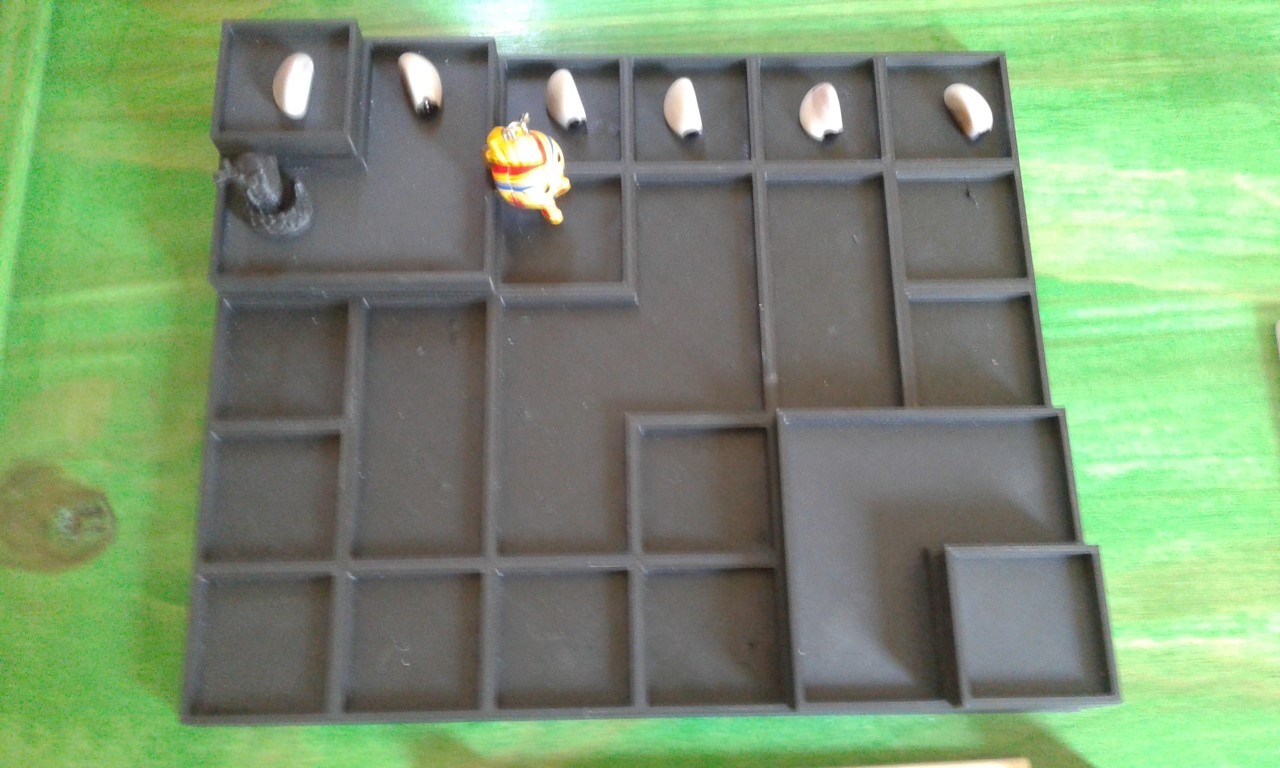
Calle roja La olenie consta de 2 celdas (1 – 1) y está situada en la parte superior.
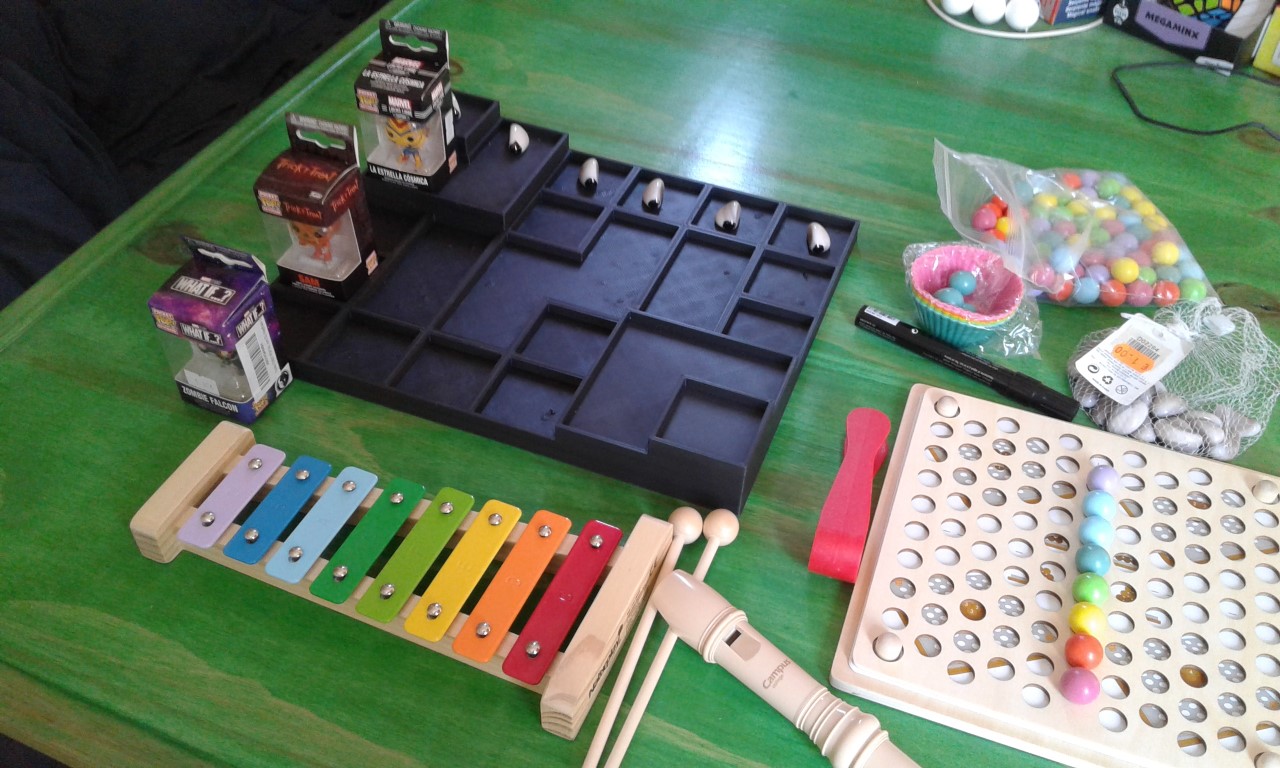
El participante más joven toma una pelota de color y las clasifica según el color de la canasta. El color de cada bola debe coincidir con el color de la nota.
Pasamos de la nota más alta a la más baja. Después de colocar la última bola de un color determinado, el jugador golpea la placa correspondiente en el xilófono tres veces.
Para un participante más avanzado, es necesario golpear 3 platos en secuencia, lo que dará como resultado el acorde deseado A, B, C, D, E, F ….
Un participante un poco mayor, después de cada golpe en el xilofono, coloca una piedra en la siguiente celda de la primera línea del Yupan, pintando la parte superior de la piedra.
Una piedra con una punta pintada representa el concepto de la Cumbre.
Los zorros observan atentamente las acciones del joven ciervo y tratan de explicarle y controlar que haga todo correctamente. Si lo hacen todo bien, podrán conseguir dos placas de metal en su cinturón al final del juego y ser un Leopardo o un Puma en el siguiente Juego. (Y además tendrás derecho a pintar esta Máscara y llevártela contigo a casa.)
Los ciervos no colorean su máscara y no pueden llevársela a casa.

A lo largo del juego, los ciervos pasan sus piedras pintadas, cuentas y rodaballos (ensartados en un hilo de doble longitud) al leopardo o al puma, y añaden otros nuevos al espacio vacío. Si el participante más pequeño está cansado, puede empezar a jugar con muñecas o una pipa o observar lo que hacen los demás participantes. Por ejemplo, puede clasificar bolas de colores en platos de colores para facilitar el trabajo de Leopard o Puma. O cortar los tubos al tamaño deseado. Y ordenarlos por color en cestas.
El ciervo también debe inventar un color para el frijol de la celda 2, que representa la suma de dos frijoles con una punta coloreada, que tiene dos cúspides coloreadas. Para ello, las Águilas Marinas deberán ayudarlos y contarles cómo se combinan los colores de las piedras (frijoles).
Tarea para Leopard y Puma
Calle Leopardov y Puma color naranja y consta de 3 celdas (1 – 3 – 1). El tótem felino se encuentra en la celda 3.
Los participantes que ya tengan dos placas en su cinturón podrán convertirse en Leopardo y Puma. Mientras los zorros entrenan a los ciervos, el leopardo y el puma pueden dibujar en sus máscaras tantas líneas como piedras colocaron los ciervos en Yupan. Si rompen esta regla y Al-Ayoun se da cuenta, no podrán convertirse en Águilas Marinas en este juego y no recibirán una placa de cinturón adicional. Y en el siguiente juego no podrán dibujar líneas en la máscara hasta que el número de líneas en su máscara sea igual al número de piedras colocadas en el Yupan multiplicado por el número de placas que tienen.
Dibujar líneas en la máscara y disciplinarla es una preparación para colorear los frijoles de manera significativa y en total concordancia con la tarea que están realizando. Y la clave de la victoria está en ese momento en el que hay que pensar con rapidez y claridad, cuando los Zorros intervendrán y tendrán que competir entre ellos en la carrera simbólica de los Bobs hasta la cima de la montaña a lo largo del camino sagrado del chaska.
El leopardo y el puma ensartan cuentas en un hilo y forman cadenas de diferentes longitudes 1, 2, 3, 4, 5, 6. Los zorros les ayudan. Como los Zorros tienen un tótem en la sexta celda, saben exactamente cómo se designa esa celda.
Cómo se designa la celda 2: debes preguntarle al ciervo (tuvieron que inventar el color de los dos extremos del frijol).
Como el signo totémico del Leopardo y del Puma está en la celda 3, saben con seguridad que esa celda está designada por un frijol con 3 vértices de colores (pueden inventarlo por analogía con su experiencia cuando eran Ciervos).
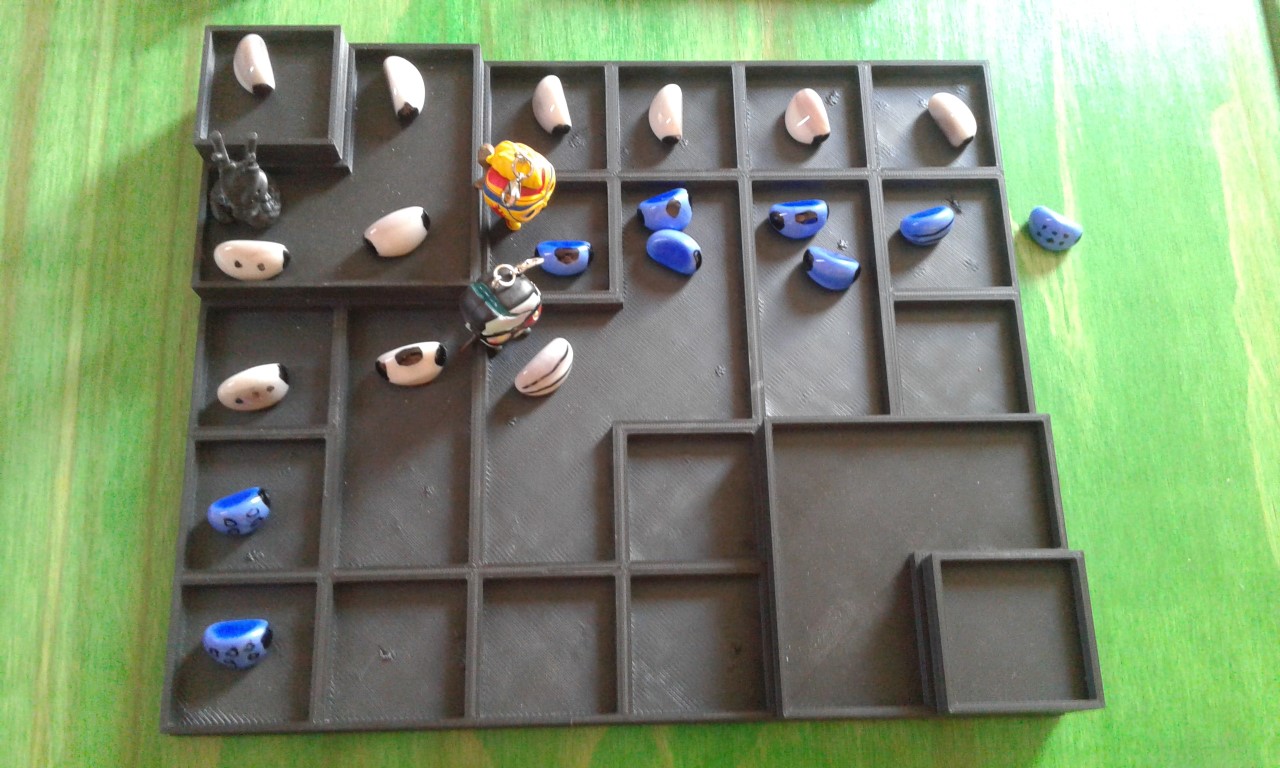
El leopardo y el puma estaban muy atentos. Cuando terminaron de hacer las cuentas más largas para las Águilas Marinas, no sabían cómo etiquetarlas. Habían 6 cuentas. Exactamente lo mismo que el ciervo tomó por el puma y el leopardo. Pero todos observaron al Ciervo Marino, y tan pronto como tejieron una tríada con un lado de 3 y dibujaron un Guijarro-Bob con dos rayas horizontales, Leopardo y Puma inmediatamente copiaron el dibujo de este guijarro en su calle.
Pero luego las águilas marinas pidieron cuentas aún más largas a los ciervos, pumas y leopardos. Los ciervos realmente quieren ser como las águilas marinas para que Ai-Ayun los invite al examen del próximo año. Y les dio premios y condecoraciones y un cinturón con tres placas.
Si Puma y Cheetah son tan hábiles que eligen la alternancia correcta de cuentas, entonces al atar el tapete, obtendrás un tapete con algún tipo de patrón o una mariposa.
Esto ya es un microjuego. Primero debes colocar el patrón en el clasificador. Luego teje cuentas muy finas y úsalas para hacer un tapete con patrón de mariposa. O cualquier mosaico concebido.
Águilas Marinas preparándose para tomar el examen de rango Zorro.
Las Águilas Marinas se encuentran en calle amarilla de 4 celdas (1 – 6 – 5 – 1). El Tótem del Águila Marina está ubicado en la celda 6. Esta es la celda más singular. En la yupana de tamaño inicial solo hay 2 celdas, que tienen un valor de 6.
Las águilas marinas saben que una tríada consta de tres bolas apiladas una encima de otra. Si agregas otra capa a la tríada, habrá 6 bolas en total. Por lo tanto, el número 6 está representado por las águilas marinas con 2 rayas.
También puedes considerar que cada franja oscura es un espacio entre capas.
Y cada tira de luz es un nivel que consiste en un número de bolas que aumenta linealmente.
En esencia, las Águilas Marinas tomaron el trabajo del Puma y el Guepardo y lo pusieron todo en una alfombra triangular.
Pueden tomar la tira de cuentas más larga de Puma y Cheetah y atarlas juntas para formar una estera triangular.

Las águilas marinas idearon marcas para las esteras que tejían y marcaban cada nueva capa con una línea adicional. Después de los cuadrados centrales 6 y 10, comenzaron a colorear con líneas solo el sombrero de Bob el Pebble. Las Águilas Marinas obtuvieron la secuencia 1, 3, 6, 10, 15, 21.

Los Zorros no quieren que las Águilas Marinas se vuelvan como ellos, por eso les contaron a las Águilas Marinas el secreto más importante de Yupana. Los zorros descubrieron que la estera se llamaba tríada plana. Y que una tríada plana con un lado de 4 y un número de bolas de 10 es exactamente igual en volumen a una pirámide triangular con un lado de 3 y tiene el mismo número de bolas, 10, por lo tanto es necesario reemplazar 3 líneas longitudinales (o 4 capas del tapete) con dos niveles de una pirámide 3D. El aire entre los globos está indicado por una ancha franja blanca. Los Zorros hicieron todo esto para que las Águilas Marinas, mientras corrían hacia la cima del cerro, no pudieran pensar rápidamente en qué ropa escoger para Chasca la Única (Sapa Inca) y cómo pintarla.

Además, los Zorros se apropiaron de la designación del número 15, que fue inventado por las Águilas Marinas, lo hicieron específicamente para establecer las Águilas Marinas, y Ai-Apek preguntó severamente a las Águilas Marinas cómo designar el apilamiento de vértices para un espacio de 4 dimensiones. Para obligar a las Águilas Marinas a resolver el problema de los Puentes y la visita de las Hermanas y muchas otras cuestiones. Por lo tanto, las águilas marinas prácticamente no tienen posibilidades de convertirse en zorros. La única manera es construir todos los polígonos regulares a partir de hilos y tubos, y luego a partir de pirámides triangulares y comprender todos los patrones. Sólo entonces se acercarán un paso más a Dios y a su representante en la tierra, Ai-Apek.
La sabiduría del Zorro
Tiene la calle más larga de 5 celdas color verde. Pero en el formulario dado solo se presentan 3 celdas (1 – 10 – 15). La siguiente celda no representada tiene el valor 7. Es un polígono con 7 vértices inscrito en un círculo. Un buen zorro debe conocer la construcción geométrica para dividir un círculo en 7 arcos iguales (este es el tema de un minijuego aparte).
Heptágono regular (a veces llamado heptágono)
6-símplex regular o heptapetona
Los zorros en la yupana son como peces en el agua. Los Zorros saben que hay una segunda celda en el zigzag con valor 10, por donde pasa la diagonal dual de los Zorros.

Los zorros se mueven a esta celda y utilizan la doble diagonal (o calle) indicada en la imagen en azul.
Los Zorros también convencen al Leopardo y al Puma de sustituir las dos piedras de la jaula por una piedra negra que representa el número 4.

Este es el número más desafortunado en la cultura japonesa y coreana. Incluso es un símbolo de muerte. Por eso Bob es completamente negro. Además, es una parte indivisible del volumen 3D de la pirámide mínima.

Los zorros plantearon la pregunta directamente sobre el color de Bob el Guijarro para la celda 20. Construyeron una pirámide 3D en cuya base se encuentra una tríada plana con un lado de 4 y un número de vértices de 10.
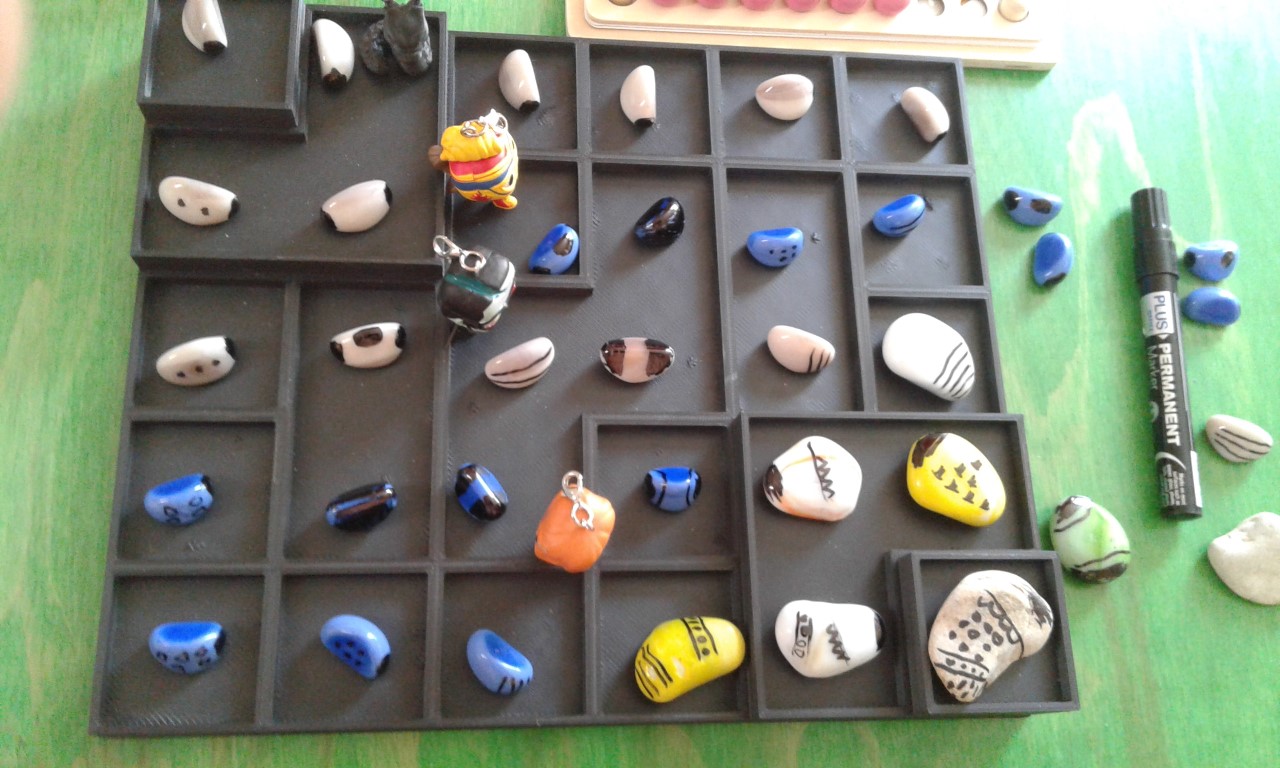
Recordaron claramente la respuesta correcta de antemano. También sabían que esta celda es la suma de dos celdas adyacentes 10, todas las cuales están ubicadas en la diagonal principal 1, 2, 6, 20, 70. El número 20 consta de 2 pirámides con lados de 3 o una grande con lado 4 o una pirámide con lado 3 y una tríada plana con lado 4. Como hay 2 pirámides y son tridimensionales en 2 capas, se designaron con la ayuda de una línea adicional debajo de cada extremo oscuro de la piedra Bob.
Habilidades sobrehumanas de Ai-Apek

Para llenar la última línea horizontal es necesario tener la habilidad de visualizar el espacio de cinco dimensiones. Un matemático tenía tales habilidades Henri Poincaré. En este juego, el derecho a colorear el Bob-stone final se le otorga al mejor Águilas Marinas, pero solo el resultado del color final es aprobado por el propio Ai-Apek. Y sólo si el Águila Marina respondía todas las preguntas de Ai-Apek y así aprobaba el examen para obtener el derecho a convertirse en Zorro.
Moderno enciclopedia matemática de secuencias 1, 5, 15, 35, 70, 126
En sus manos sostiene 12 palitos (7*5=35) de conteo y un frijol pintado con un punto grande y 6 círculos al final (este es el símbolo de 6 – simplex). Esto fue lo que se utilizó para cifrar el quipu seleccionando el tocapu necesario.
El 6-simplex contiene 35 caras. Y Ai-Ayun le explica al Águila Marina que en este caso no estamos contando los vértices, sino las aristas de un objeto geométrico. Porque todas las caras se pueden representar como un gráfico plano con intersecciones dentro de un círculo con 7 puntos alrededor de la circunferencia.
Minijuegos y secuelas.
La siguiente serie incluye mini tareas o minijuegos para todas las edades e intereses.
Enumeraré algunos de los nombres de los minijuegos:
6, 12, 30 Puentes o Hermanas.
Tokapu (Tomashik Burkina Faso o Quechua o Kilka).
Octaedro estrellado.
Juego de lectura de poesía del icosaedro


Encontrar un camino a través de una ciudad (o laberinto) en el dodecaedro druida o la Maraña de Ariadna.
Tejiendo una pulsera con palabras encriptadas.
Juego de computadora: controla un OVNI para viajar a través de un gráfico temporal de eventos.
Templo del Sol.
Y el Templo del Sol y la Luna con control de espejo robótico (kit de creación de unidades basadas en robots).
Rompecabezas para niños de 12 a 14 años: Descifra la carta de un jesuita del Perú.


Calendario Inca
¿Dónde nació Quipukamaik?
Almacén del asistente de Quipukamaik y constructor jefe Fox (El objetivo del juego es enseñar a realizar estimaciones para la construcción de estructuras a partir de bloques de ladrillos).

3 Magos y Druidas (Guiando una caravana desde el centro del Sahara hasta las Minas de Sal cerca del Reino de Aksum).

Círculo de planetas estelares.

Calendario del agricultor.

Fabricación de encajes.
Movimiento de planetas y estrellas.

Juego de computadora o consola: Aksum Obelisk y las mazmorras de Babilonia.
Mosaicos del Magreb (Un estudio de los grupos de simetría que son importantes en la fabricación de encajes complejos).
Guamachuco – Colocación de Huaku y construcción de ciudades – Juego de computadora basado en City Simulator.

Runas de los Druidas y Genghis Khan (Karuna).
Diseño y construcción del Acueducto y Sifón (Basado en un mapa 3D del área Inca).
Talismán (Simulador de Fortaleza Estelar).

Inca el Marinero Águila Marina o cómo llegar a Camboya en una balsa de troncos de balsa y regresar a Perú.
Geometría Sagrada y la Sombra de las Alas de la Mariposa.
El secreto principal de Uari es el juego final, que solo se puede completar completando el entrenamiento en una u otra pista en juegos anteriores con las calificaciones correspondientes en la cuenta electrónica personal del jugador.
El Secreto de la Vida o Tres Diosas del Destino Moira es un juego final para chicas, que solo se puede completar completando el entrenamiento en una u otra pista en juegos anteriores con las calificaciones correspondientes en tu cuenta electrónica personal.
Retratos de toda la vida de Ai-Apek
Adiciones respecto a la figura Ai-Apek (1).
Se utiliza una máscara oscura con colmillos de animales salvajes insertados justo en las comisuras de los labios.
Ai-Apek Representado con un cinturón de 2 serpientes, una flor en la cabeza con 7 pétalos, un tocado decorado con la piel de un animal felino (presumiblemente un jaguar o más pequeño), un cuchillo de una forma característica está atado a la parte posterior de su cinturón.
En el siglo XV, en Daguestán (región de Tabasarán) e Irán, se utilizaba un cuchillo de esta forma para recortar alfombras. Es posible que hayan sido exportados a través del reino aksumita a otros países durante un largo período de tiempo.
Este tipo de cuchillo es típico de las imágenes de la cultura Moche, que precedió a la cultura Inca.
También doy un ejemplo de imágenes de Tokapu en cada cuadrado de la túnica (vestimenta) Ai-Apek.
En sus manos sostiene 12 palitos (7*5=35) de conteo y un frijol pintado con un punto grande y 6 círculos al final (este es el símbolo de 6 – simplex). Esto fue lo que se utilizó para cifrar el quipu seleccionando el tocapu necesario.


Ropa Ai-Apek




